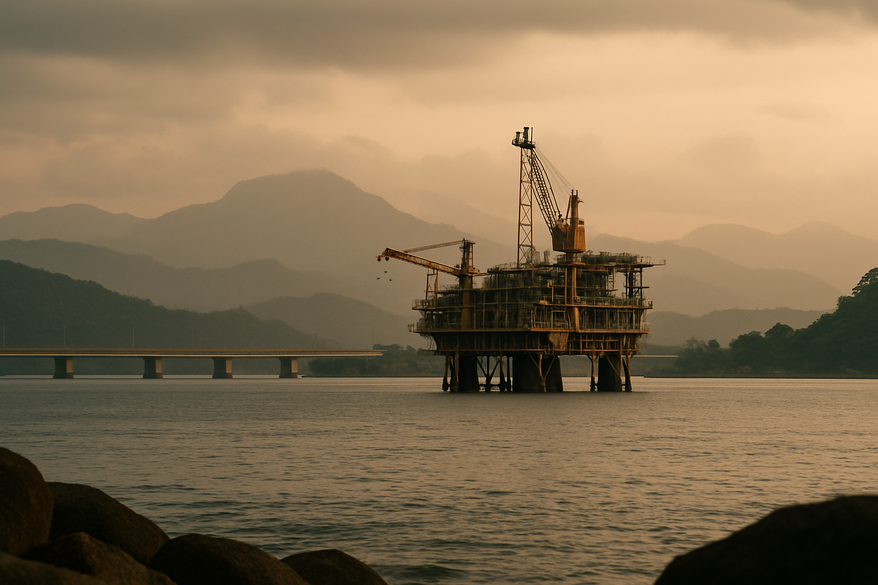Recent SLB/OneSubsea Awards and What They Mean for Subsea Suppliers
Teknologam Sdn Bhd follows subsea project news closely because these awards shape demand for specialised fabrications. The market reaction to the recent SLB announcements signals sustained investment in deepwater development and increased opportunity for local manufacturers to support lifetime extension and EPC delivery scopes.
Key Takeaways:
- SLB-led wins shift near-term demand toward large EPC and life-extension scopes.
- Technical focus moves to reliability and intervention-friendly designs for deepwater assets.
- Teknologam can pursue partnerships to supply modules that ease installation and prolong field life.
Market context and strategic significance
Recent headlines about SLB and OneSubsea underline renewed operator spending in the region. These awards reflect operator priorities: reduce unit operating cost and extend production from mature deepwater fields. They also confirm that global subsea players will continue to subcontract significant scopes locally.
- Increased local content potential
- More demand for modular subsea assemblies
- Stronger requirements for QA and traceability
SLB’s OneSubsea business is focused on integrated subsea delivery and services, which helps explain why these contracts trend toward large EPC scopes rather than piecemeal equipment supply. SLB’s OneSubsea integrated subsea systems provide context for the kinds of integrated solutions driving local demand.
What the contracts cover and technical emphasis
Announcements point to integrated delivery of subsea production systems, including manifolds, templates, and umbilical, riser and flowline (URF) scopes. OneSubsea equipment typically emphasizes reliability and serviceability in deepwater environments.
"We expect the EPC scope to demand tighter fabrication tolerances and longer equipment warranties," say our project engineers at Teknologam.
These projects often require equipment designed for minimal intervention because intervention costs escalate non-linearly in deepwater. The industry also values modular assemblies that simplify offshore tie-ins and reduce offshore manhours.
Life-extension and intervention: technical implications
The industry trend is toward interventions and selective upgrades that defer costly brownfield replacements. Life-extension strategies combine targeted hardware upgrades with enhanced monitoring and flow assurance measures. Vendors must integrate sensors and modular spools into manifold designs.
Key Insight: Designing for intervention reduces long-term operating expense and creates repeatable aftermarket work.
Engineers now prioritize corrosion-resistant alloys, easy-access connector systems, and diagnostic ports. These choices influence manufacturing processes, NDT regimes, and spare-parts inventory planning. Teknologam sees these areas as immediate capability-development priorities.
Contract delivery challenges and supply chain impacts
Large EPC contracts require disciplined interfaces between original equipment manufacturers and local fabricators. Complex commercial arrangements and stringent HSE demands mean suppliers must be ready for early engagement on constructability reviews.
- Local suppliers should invest in welding qualifications and API/NORSOK compliance. See relevant NORSOK standards and guidance for the regional expectations and technical frameworks.
- Supply chains will favour vendors with proven subsea testing and traceability.
- Collaborative scheduling reduces offshore integration risk.
Timely delivery depends on early procurement and prequalification. Fabrication yards benefit from digital workpacks and 3D model integration. We recommend suppliers formalize inspection plans aligned with EPC milestones.
What this means for Teknologam and peers
As SLB-led activity recurs, Teknologam plans targeted capability upgrades. We will expand our subsea module fabrication lines and bolster NDT and pressure-testing capacity. We also aim to formalize partnerships for subsea connectors and sensor integration.
"Our goal is to be a trusted local partner that meets EPC timelines and technical specs," says our manufacturing lead.
We intend to pursue prequalification with major EPC contractors and to present modular solutions that reduce offshore manhours. That approach aligns with operator priorities to prolong field life with minimum intervention.
Outlook and next steps for suppliers
The ongoing flow of awards spotlights long-term subsea work in Malaysia and nearby basins. Suppliers who act now will position themselves for multiple campaign cycles. Focus on intervention-friendly designs, supply chain resilience, and compliance with operator QA regimes.
For companies like Teknologam, the path forward combines strategic investments in capability with early dialogue with EPC houses. Staying abreast of the latest subsea announcements will help tailor our offerings to actual project needs. Continued monitoring of subsea developments is essential as projects evolve.
